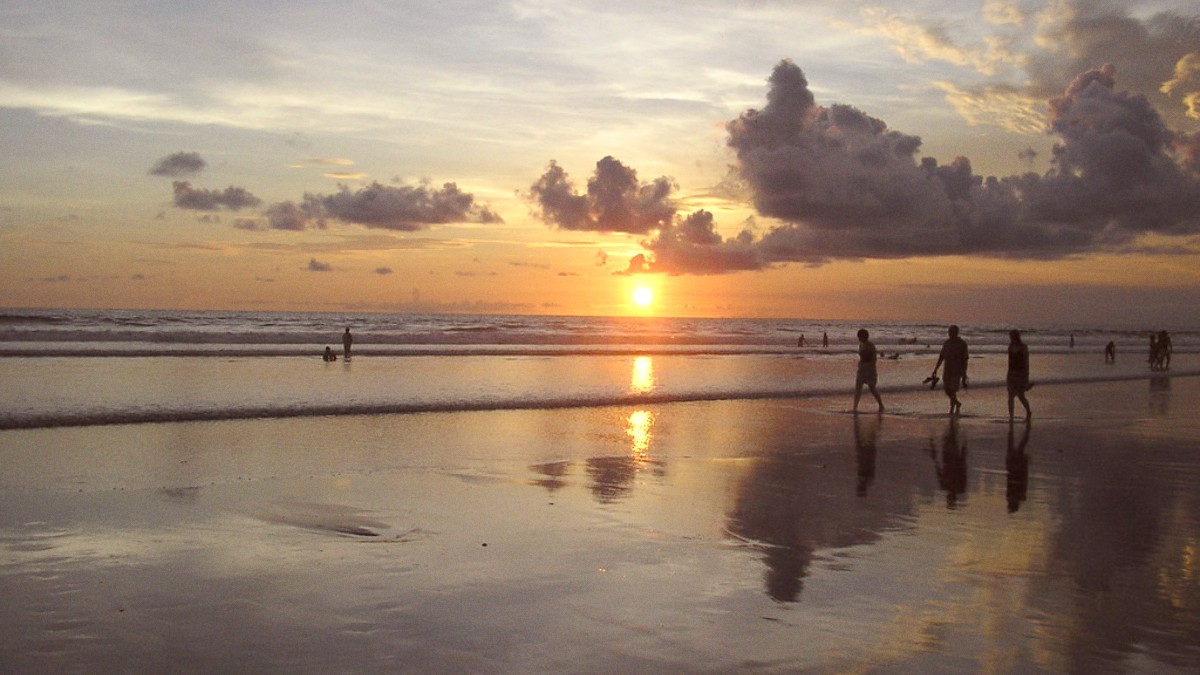
Indonesia
Seminyak features no metro system, trams, or extensive public bus network tourists typically use. While Trans Sarbagita public bus exists, it mainly serves local commuters, and routes are not convenient for most tourist destinations within Seminyak.
Not applicable for Seminyak's local tourist transport routes or ticketing systems. Tourists mainly rely on other modes of transportation.
Gojek and Grab offer competitive prices and convenience for various distances. See fare upfront, track driver.
Blue Bird Group taxis are reliable and use meters. Hail on street or find at stands. Insist on meter use.
Blue Bird taxi fares start around IDR 7,000. Short rides within Seminyak IDR 20,000-50,000. Pay in cash; small denominations are helpful.
Procedures: Valid International Driving Permit (IDP) and original national driving license are necessary. Most companies require drivers at least 21 years old.
Passport, copy of passport, valid driving licenses. Credit card often for security deposit. Driving challenging: chaotic traffic, narrow roads, limited parking. Private driver often less stressful.
You can rent scooters from guesthouses, small shops, and dedicated rental agencies throughout Seminyak.
IDP endorsed for motorcycles, national motorcycle license. Riding without correct IDP means no travel insurance coverage in an accident, potential police fines. Cost: IDR 60,000-100,000/day. Helmets provided and must be worn. Only rent if experienced; highly prone to accidents.
Seminyak does not feature all types of specialized transportation found in other parts of the world.
No hop-on-hop-off services specific to Seminyak. Tour operators offer day tours across Bali using minivans/buses. Hiring a private driver for full/half-day tours is a popular, flexible option.
Not relevant for intra-Seminyak travel. Boat services are for inter-island transfers from Sanur or Padang Bai to nearby islands (Nusa Islands, Gili Islands).
Seminyak and Bali have no cable cars, funiculars, tuk-tuks, or jeepneys. Main transport modes: cars, scooters, ride-hailing services.
Accessibility infrastructure is generally poor in Seminyak, posing challenges for travelers with mobility needs.
Seminyak has sidewalks, but they can be uneven, narrow, or obstructed by parked scooters, street vendors, or construction.
Walking is feasible for short distances within specific areas, like strolling along Jalan Kayu Aya (Oberoi Street) for shopping or walking to a nearby restaurant.
No formal, comprehensive walking tour infrastructure specifically for Seminyak itself. The area is more spread out than a compact city center.
Most visitors walk from their accommodation to nearby shops, restaurants, and the beach. Create your own self-guided walk.
Dedicated bicycle lanes are limited in Seminyak. Cycling on busy main roads is not recommended due to high traffic density, chaotic driving habits, and lack of safety infrastructure for cyclists.
Cycling is more suitable for quieter backroads, rural areas, or designated cycling tours elsewhere in Bali, where you enjoy scenery without heavy traffic.
Navigating Seminyak is an experience in itself. While traditional public transport is limited, numerous convenient options make local exploration easy.
Ride-hailing apps, reliable taxis, and scooter rentals present flexible ways to discover Seminyak's charms and beyond.